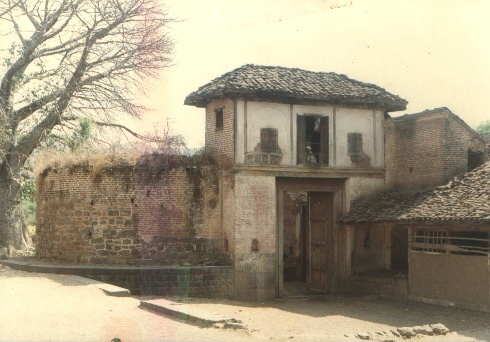
Nana Phadnavis Wada, Menavali
The weekend of the 5th and 6th November 2005, saw my wife Amita and I, and her sister Aparna and her husband Suvarnn Ranadive, camp at the Mahabaleshwar Club, Mahabaleshwar.
The charming old colonial Club has a magnetism of its own with its old red-laterite buildings and lush greenery. The dark knotty old trees have gnarled ancient trunks, marked with red and white bands. The rambling golf course and meadows present a great opportunity for a leisurely amble on the fresh dewy Mahabaleshwar mornings.
Sunday after lunch, we determined to drive down to Menavali (मेणवली) to see the famous 18th century Nana Phadnavis Wada. Suvarnn opted out choosing instead to watch the cricket match and catch forty afternoon winks.
Amita, Aparna and I set out in
Aparna’s Hyundai Santro and drove the scenic twenty-eight
mountain kilometers due east, via Panchgani to Wai.
|
Wai is famous for its dark-brown Kandii Pedhas and the Dholya Ganpati
or Maha Ganpati temple.
The grey basalt temple of MahaGanapati, famous for its architectural grandeur, stands facing the east on the north bank of the Krishna in Ganapati Aali. Ganpatrao Bhikaji Raste built it in 1762 at a cost of Rs. 160,000. The huge Ganapati idol is carved out of a black basalt monolith and painted red. The Peshwa, Balaji Bajirao ( Nanasaheb) married Gopikabai, daughter of Bhikaji Raste of Wai. The Rastes assisted the Peshwas in their Gujarat, Malwa & Karnataka military campaigns. They built palaces, temples, ghats, & gardens in Wai. Almost all temples around Wai -- the Kashivishweshwar, Mahalaxmi, MahaGanapati, Kaleshwar, Bhadreshwar and Maha-Vishnu -- belong to the late Peshwa period (1761-1818). |
From Wai, we turned northwest. Driving another 3 km and through a tiny hamlet, we drove through a large Peshwa style stone and brick gateway and entered the village-town of Menavali. [17.968274°N, 73.865323°E].
Next to a temple on the left of the road was a small road leading to the Nana Phadnavis wada.
Nana Phadnavis (1742-1800) was a great Maratha statesman and book keeper of the Peshwas.
The Nana Phadnavis Wada is a large six-quadrangled, perimeter-protected wada. This construction was completed circa. 1780.
Nana Phadnavis Wada, Menavali
Bhavan Rao Trymbak Pant-Pratinidhi of Aundh and Raghunath Ghanshyam Mantri (Satara) bestowed the village of Menavali to Nana Phadnavis in December 1768. Nana Phadnavis settled the village and built himself the Wada with the ghat on the river Krishna and the two temples, one dedicated to Lord Vishnu and another to Meneshwar (मेणेश्वर) Lord Shiva.
Originally, simple stone steps descending into a river, ghats evolved into an elaborate arrangement of terraces with separate areas for different activities, such as bathing, washing, filling water and performing religious rites. Temples were traditionally built on ghats.
The
Peshwa-era saw architectural combinations of a Wada-type residence, a
Ghat on a water-body and
a Temple.
The Nana Phadnavis wada on the bank of the river
Krishna at Menavali, is one of the very rare places where such
a combination is preserved intact.
Nana, being the Peshwas' "Phadnavis" transcribed and maintained their documents of accounts and administrative letters in the ancient "Modi" script. These documents, known as the famous “Menavli Daptar” were preserved in this Wada at Menavali.
After Nana Phadnavis died in 1800, the Peshwa Bajirao-II, confiscated the Wada. The British General Wellesley (brother of Lord Wellesley), Duke of Wellington returned the property to the Nana's wife Jeeubai on 25th March, 1804. After her death, Sir Bartle Frere (governor of Bombay) handed over the property to Nana's descendants. The Nana Phadnavis Wada today remains with his descendants. Having split the major part of his properties between themselves, the Wada is still owned jointly by them all.
The state of disrepair of the Wada
was a
tragic discount to
its historic importance and did a disservice to the memory of its
illustrious
creator.
A red tractor was parked outside the
wada
and
the caretakers were sitting around, seemingly in a Rip van Winkle style
18th century oblivion, while civilization marched on at Pune, barely 60
km to the north.
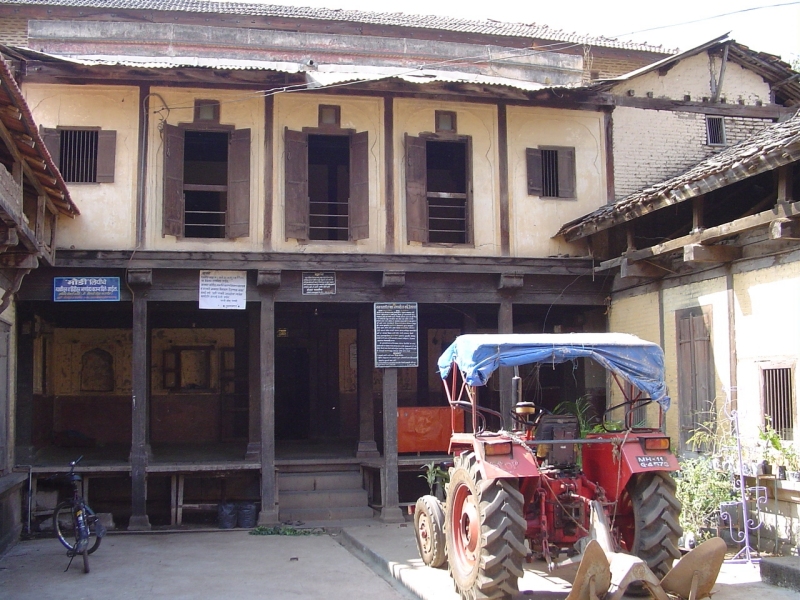
Entrance of Wada main building
A friendly little boy called Razaak, volunteered to be our tour guide.
We climbed up the dark musty, narrow, steep staircase concealed in the metre-thick wall to the floor above. The staircase was at once secret and easily secured, admitting only one person at a time.
Here we saw Nana Phadnavis's reception "darbar" hall and attached bedroom with a teakwood bedstead. The teakwood bedstead was also an intricately carved four-poster. The floor was swept with clay and cowdung.
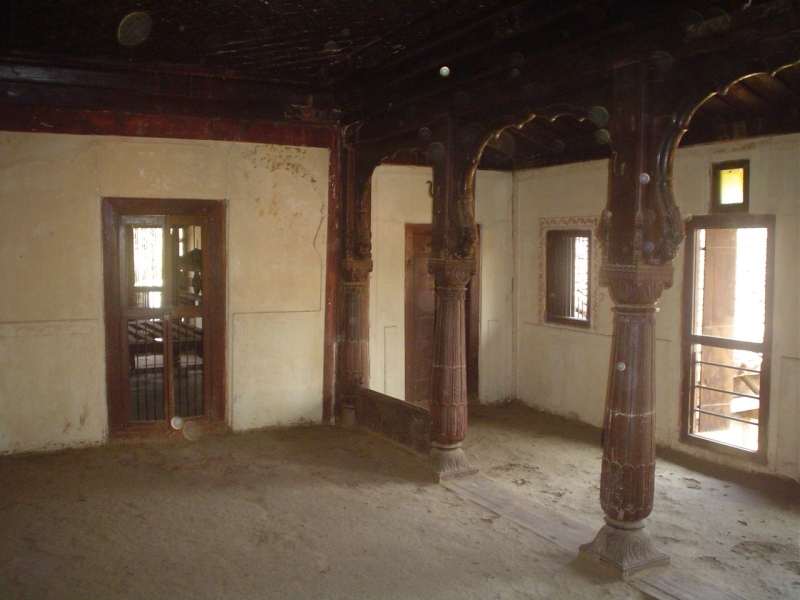
The teak ceiling of the reception hall had a beautiful carved floral motif and was supported by classic Peshwa suru (cypress-shaped) columns.
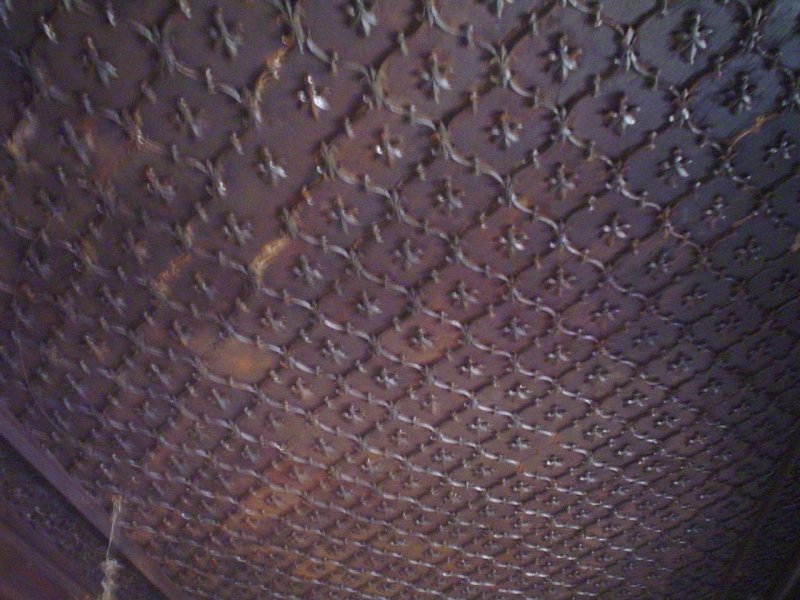
Most Wadas are systems of open courtyards of increasing security. The corridors on the upper floor were lined with teak-wood lattice work. The still beautiful wood-work was heavily weathered and discolored through poor maintenance.
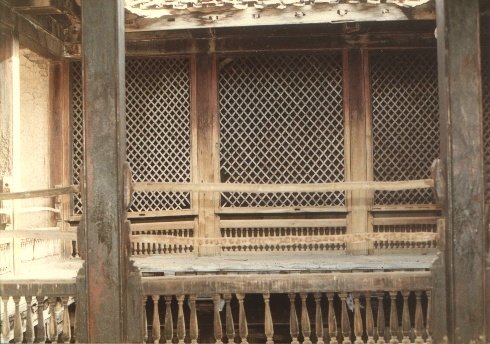
Out of an upper-floor window, we could see a courtyard in a locked area of the Wada. The courtyard had a stone fountain carved out of a single monolith rock.
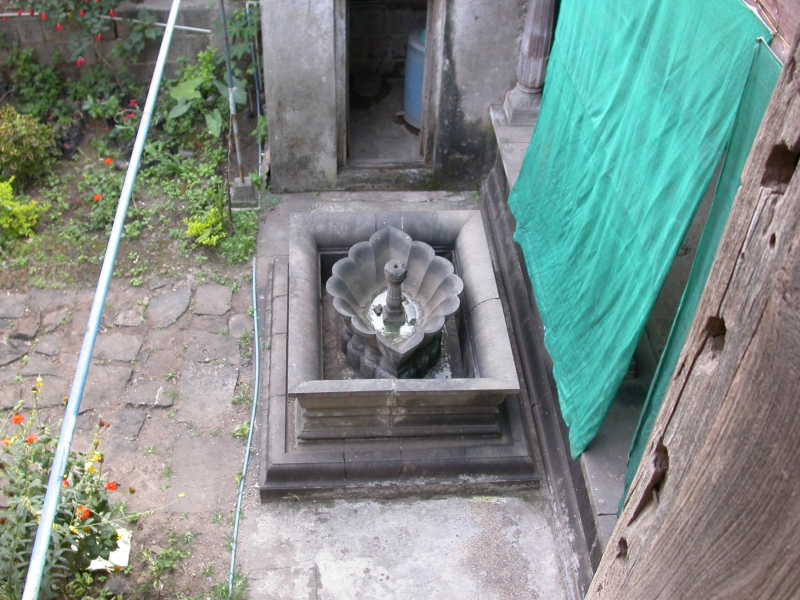
The wall was decorated with the characteristic white motifs against a brick red background, typical of the Peshwa era.
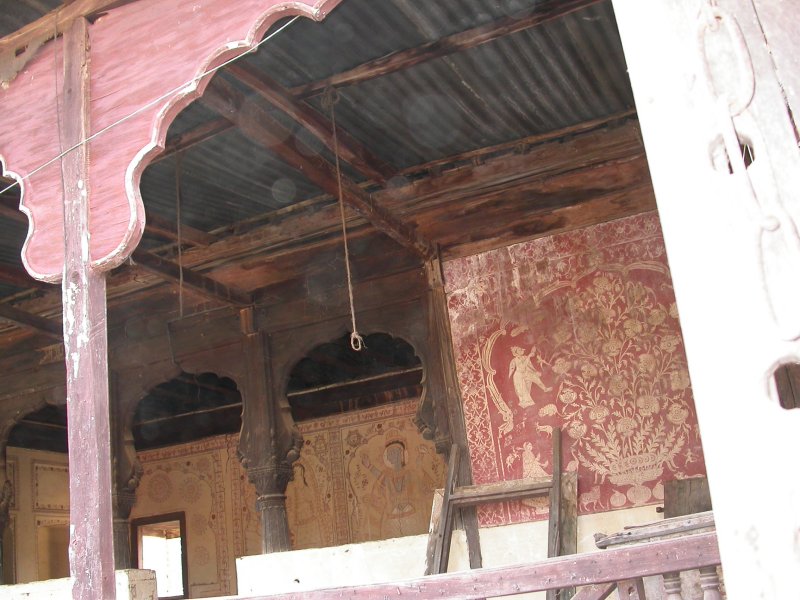
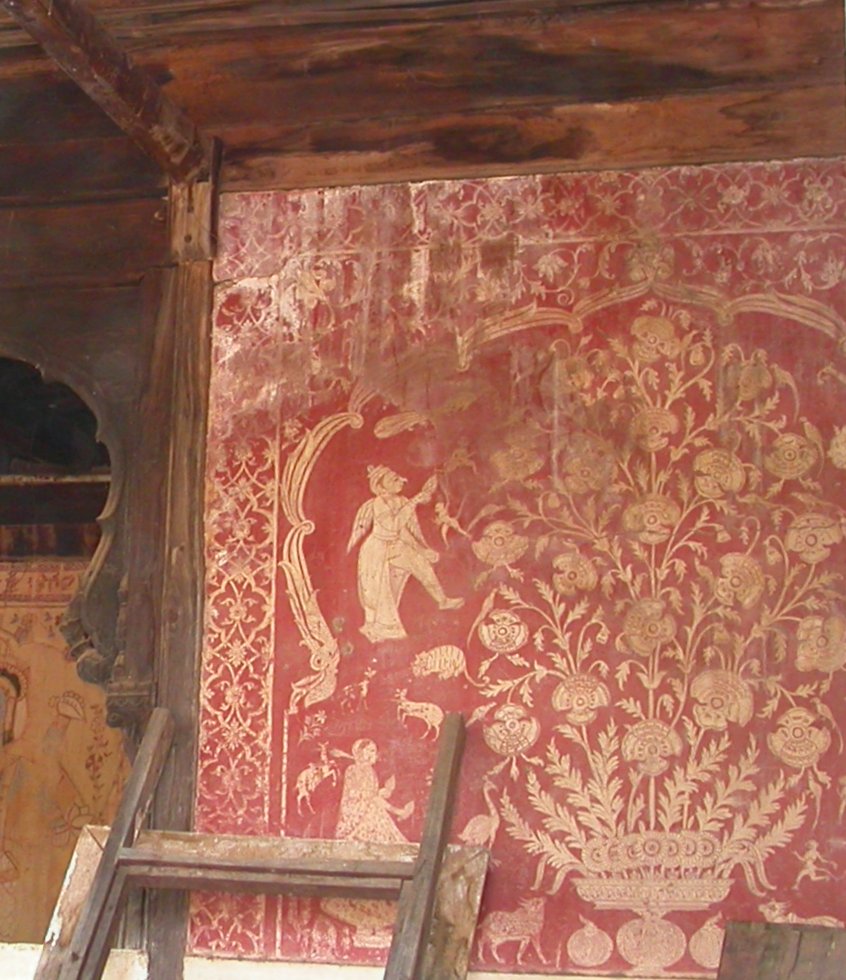
The little boy also showed us a concealed escape stairway in the wall that led out of the Wada.
Outside the wada, a little girl called Sheetal, volunteered to show us around. She led us down the stone steps leading to the ghat on the river Krishna.
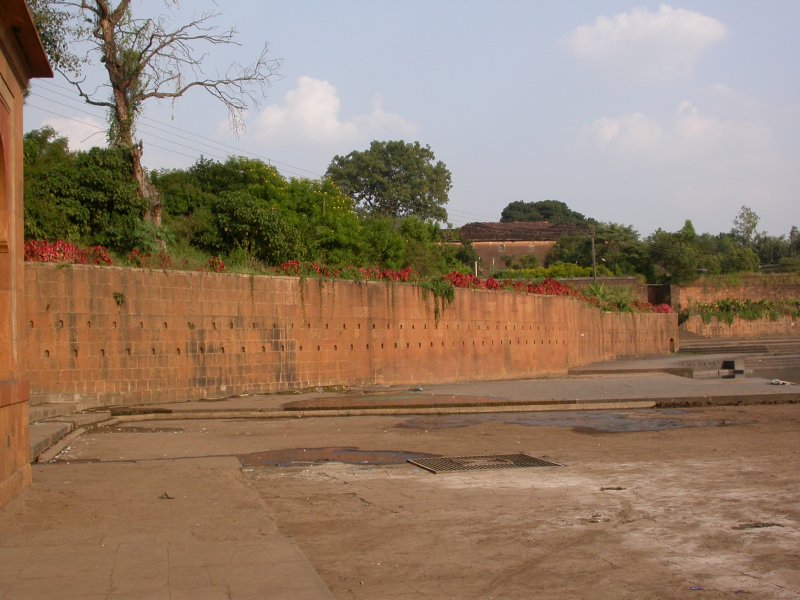
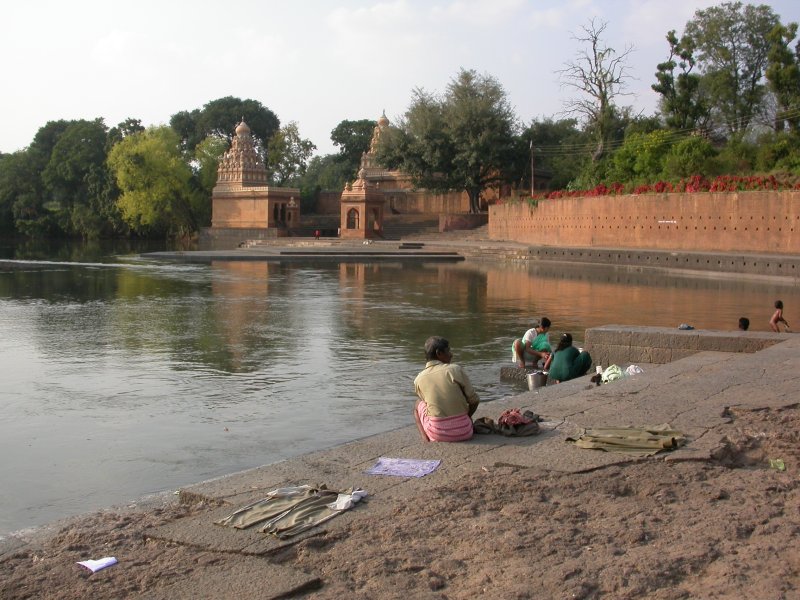
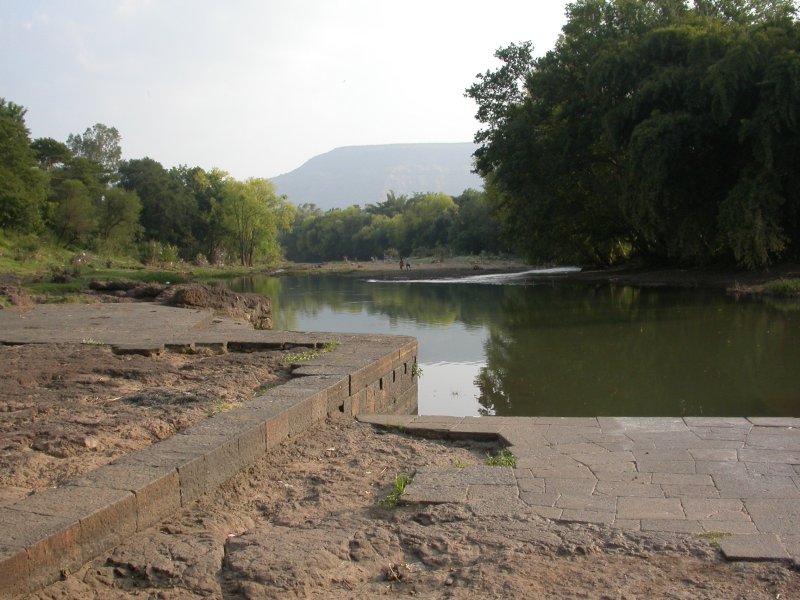
Sheetal told us that the film crew of the Bollywood
movie Swades, had camped at the ghat to shoot some footage. The
crew apparently cleaned and painted the old stone walls
of the ghat and the temples.
On descending the steps and turning right, we saw a
breathtaking view of Pandavgarh in the distance.
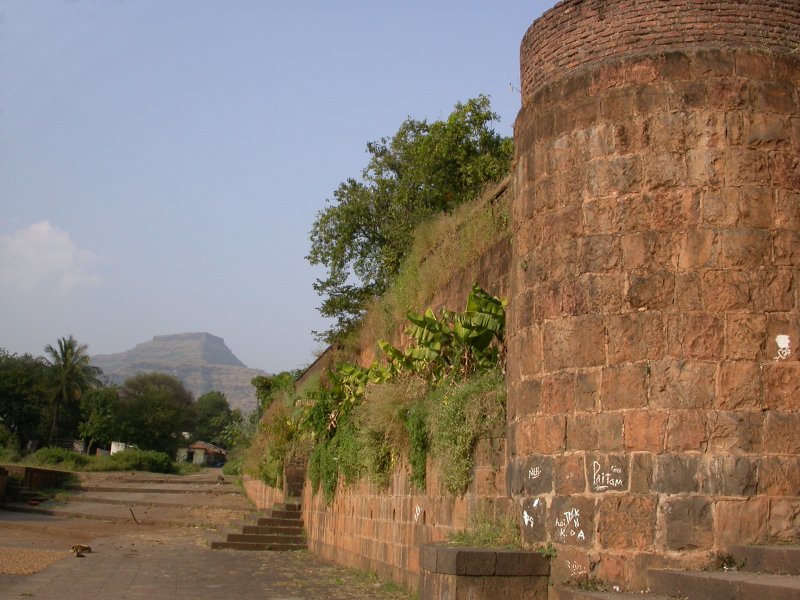
Nana Phadnavis constructed two temples on the Krishna ghat, when he built his wada. One temple was dedicated to Lord Vishnu. The other to Meneshwar (मेणेश्वर) Lord Shiva.
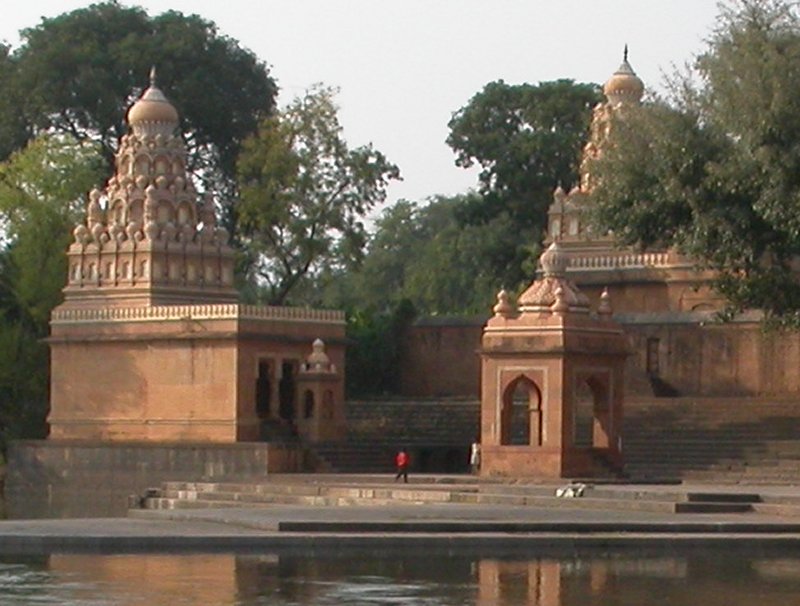
The bell house of the Meneshwar temple houses a six hundred and fifty kilogram bell. This bell was captured by Bajirao-1’s brother Chimaji Appa, from a cathedral in the Portuguese fort at Bassein. Dated 1707, the five-alloy bell bears a bas-relief of Mary carrying the infant Jesus Christ cast into it.
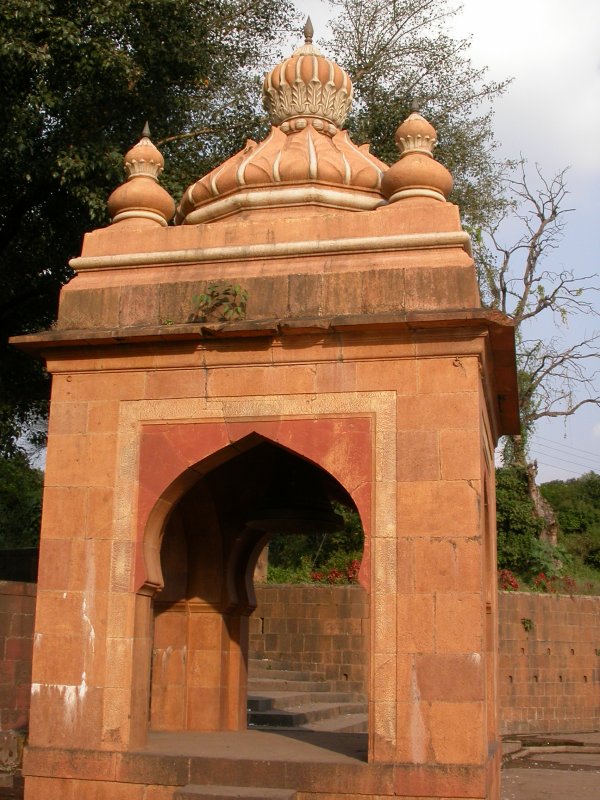
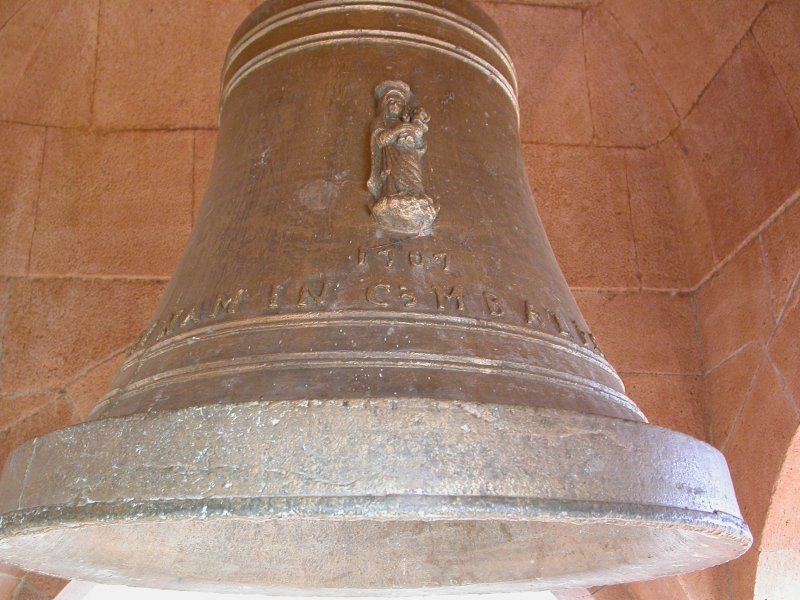
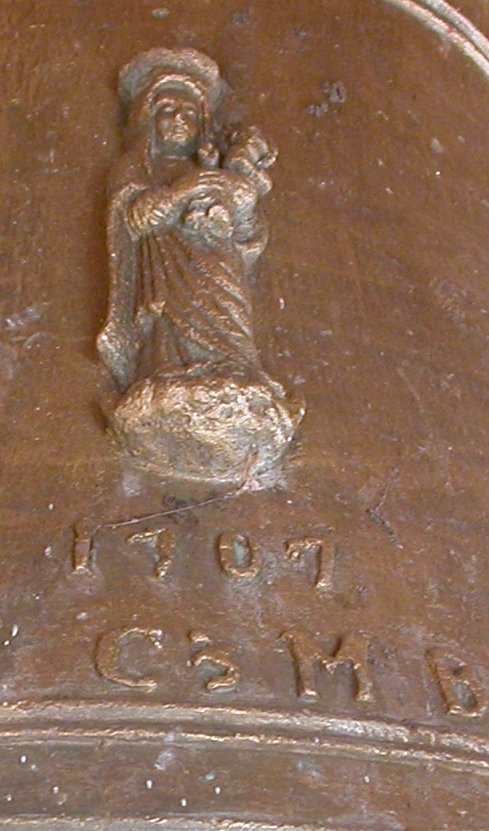
There was an ancient tree, with a massive coniform trunk. It had a platform around it as old as the Wada itself.
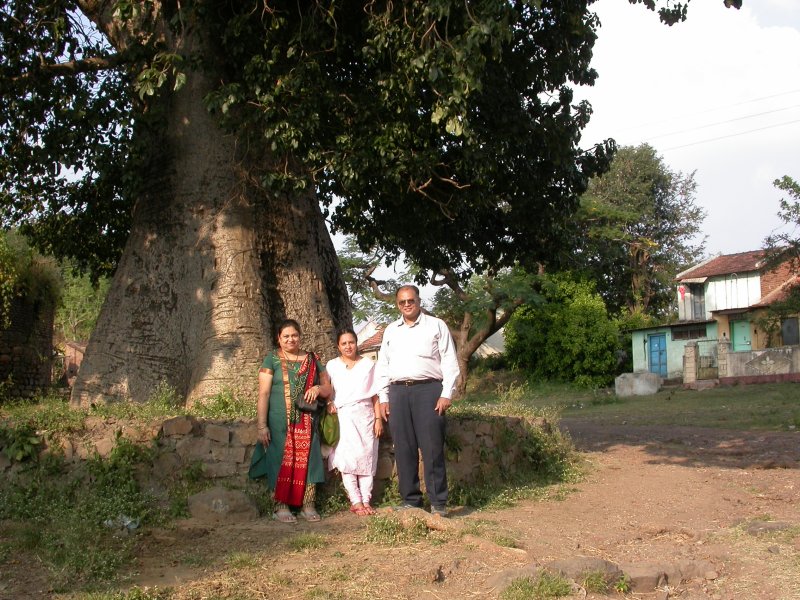
This tree featured in the Bollywood movie Swades. In the movie, the village elders hold a Panchayat on the stone platform around this tree.
Several Bollywood movies have been shot, using the wada as an exotic location, notably, Yudh (Jackie Shroff/Tina Munim), Mrutyudand (Madhuri Dixit), Goonj Uthi Shahnai, Jis Desh Me Ganga Rahata Hai (Govinda), Ganga-jal (Ajay Devgan), Sarja (Ajinkya Deo) and Swades (Shahrukh Khan, Gayatri Joshi).